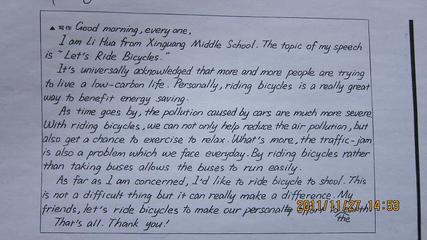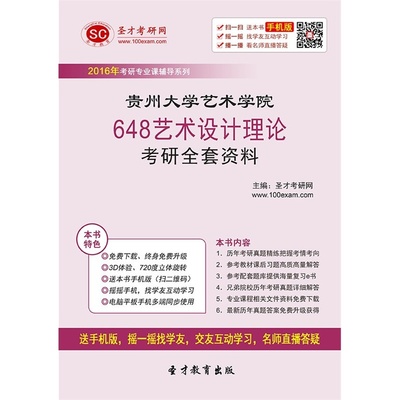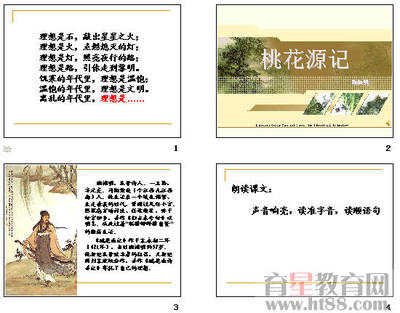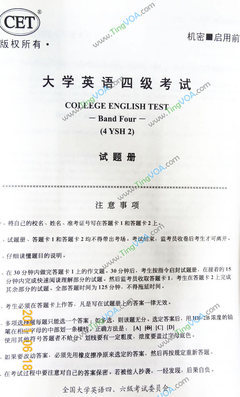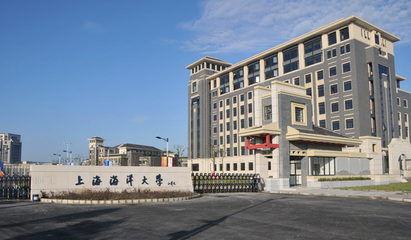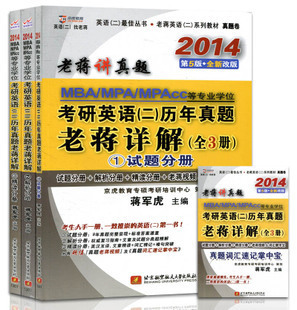
2012考研英语二真题
Section 1 Use of English
Directions:
Millions of Americans and foreigners see GI. Joeas a mindless war toy, the symbol of American military adventurism,but that’s not how it used to be .To the men and womenwho1)inWorld War II and the people they liberated ,the GI. wasthe2) mangrown into hero ,the pool farm kid torn away from his home ,the guywho3)all the burdens ofbattle ,who slept in cold foxholes, who went withoutthe4)of food and shelter ,who stuck it out and drove back the Nazi reignof murder .this was not a volunteer soldier ,not someone wellpaid,5)anaverage guy ,up6)the best trained,best equipped ,fiercest ,most brutal enemies seen incenturies.
His name is not much.GI. is just a militaryabbreviation7)GovernmentIssue ,and it was on all of thearticle8)tosoldiers .And Joe? A common name for a guy who never9) it tothe top. Joe Blow, Joe Magrac …a working class name. The UnitedStates has10) had apresident or vice-president or secretary of state Joe.
GI .joe had a (11) career fighting German,Japanese, and Korean troops. He appears as a character, or a (12)of American personalities, in the 1945 movie The Story of GI. Joebased on the last days of war correspondent Ernie Pyle. Some of thesoldiers Pyle (13) portrayed themselves in the film. Pyle wasfamous for covering the (14)side of the warl, writing about thedirt-snow –and-mud soldiers, not how many miles were(15)or whattowns were captured or liberated, His reports(16)the “willie”cartoons of famed Stars and Stripes artist Bill Maulden. Bothmen(17)the dirt and exhaustion of war, the (18)of civilization thatthe soldiers shared with each other and the civilians: coffee,tobacco, whiskey, shelter, sleep. (19)Egypt, France, and a dozenmore countries, G.I. Joe was any American soldier,(20)the mostimportant person in their lives.
1.[A] performed[B]served[C]rebelled[D]betrayed
2.[A] actual[B]common[C]special[D]normal
3.[A]bore[B]cased[C]removed[D]loaded
4.[A]necessities[B]facilitice[C]commodities[D]propertoes
5.[A]and [B]nor [C]but [D]hence
6.[A]for [B]into[C] form [D]against
7.[A]meaning[B]implying[C]symbolizing[D]claiming
8.[A]handedout [B]turnover[C]broughtback[D]passed down
9.[A]pushed[B]got[C]made[D]managed
10.[A]ever[B]never[C]either[D]neither
11.[A]disguised[B]disturbed[C]disputed[D]distinguished
12.[A]company[B]collection[C]community[D]colony
13.[A]employed[B]appointed[C]interviewed[D]questioned
14.[A]ethical[B]military[C]political[D]human
15.[A]ruined[B]commuted[C]patrolled[D]gained
16.[A]paralleled[B]counteracted[C]duplicated[D]contradicted
17.[A]neglected[B]avoided[C]emphasized[D]admired
18.[A]stages[B]illusions[C]fragments[D]advancea
19.[A]With[B]To[C]Among[D]Beyond
20.[A]on the contrary [B] bythis means [C]from theoutset [D]at that point
SectionIIReadingComprehension
Part A
Directions:
Read the following four texts. answer the question aftereach text by choosing A,B,C or D. Mark your answers on ANSWER SHEET1.(40 points)
Text 1
Homework has never been terribly popular withstudents and even many parents, but in recent years it has beenparticularly scorned. School districts across the country, mostrecently Los Angeles Unified, are revising their thinking on hiseducational ritual. Unfortunately, L.A. Unified has produced aninflexible policy which mandates that with the exception of someadvanced courses, homework may no longer count for more than 10% ofa student’s academic grade.
This rule is meant to address the difficulty thatstudents from impoverished or chaotic homes might have incompleting their homework. But the policy is unclear andcontradictory. Certainly, no homework should be assigned thatstudents cannot do without expensive equipment. But if the districtis essentially giving a pass to students who do not do theirhomework because of complicated family lives, it is going riskilyclose to the implication that standards need to be lowered for poorchildren.
District administrators say that homework willstill be a pat of schooling: teachers are allowed to assign as muchof it as they want. But with homework counting for no more than 10%of their grades, students can easily skip half their homework andsee vey little difference on their report cards. Some studentsmight do well on state tests without completing their homework, butwhat about the students who performed well on the tests and didtheir homework? It is quite possible that the homework helped. Yetrather than empowering teachers to find what works best for theirstudents, the policy imposes a flat, across-the-boardrule.
At the same time, the policy addresses none of thetruly thorny questions about homework. If the district findshomework to be unimportant to its students’ academic achievement,it should move to reduce or eliminate the assignments, not makethem count for almost nothing. Conversely, if homework does nothingto ensure that the homework students are not assigning more thanthey are willing to review and correct.
The homework rules should be put on hold while theschool board, which is responsible for setting educational policy,looks into the matter and conducts public hearings. It is not toolate for L.A. Unified to do homework right.
21.It is implied in paragraph 1that nowadays homework _____.
[A] is receiving more criticism
[B]is no longer an educational ritual
[C]is not required for advanced courses
[D]is gaining more preferences
22. L.A.Unified has made the rule about homeworkmainly because poor students _____.
[A]tend to have moderate expectations for theireducation
[B]have asked for a different educationalstandard
[C]may have problems finishing theirhomework
[D]have voiced their complaints abouthomework
23. According to Paragraph 3, one problem with thepolicy is that it may ____.
[A]discourage students from doinghomework
[B]result in students' indifference to theirreport cards
[C]undermine the authority of statetests
[D]restrict teachers' power ineducation
24. As mentioned in Paragraph 4, a key questionunanswered about homework is whether ______.
[A] it should be eliminated
[B]it counts much in schooling
[C]it places extra burdens on teachers
[D]it is important for grades
25.A suitable title for this text could be______.
[A]Wrong Interpretation of an EducationalPolicy
[B]A Welcomed Policy for Poor Students
[C]Thorny Questions about Homework
[D]A Faulty Approach to Homework
Text2
Pretty in pink: adult women do not remember beingso obsessed with the color, yet it is pervasive in our young girls’lives. It is not that pink is intrinsically bad, but it is such atiny slice of the rainbow and, though it may celebrate girlhood inone way, it also repeatedly and firmly fuses girls’ identity toappearance. Then it presents that connection, even amongtwo-year-olds, between girls as not only innocent but as evidenceof innocence. Looking around, I despaired at the singular lack ofimagination about girls’ lives and interests.
Girls’ attraction to pink may seem unavoidable,somehow encoded in their DNA, but according to Jo Paoletti, anassociate professor of American Studies, it is not. Children werenot colour-coded at all until the early 20th century: in the erabefore domestic washing machines all babies wore white as apractical matter, since the only way of getting clothes clean wasto boil them. What’s more, both boys and girls wore what werethought of as gender-neutral dresses. When nursery colours wereintroduced, pink was actually considered the more masculine colour,a pastel version of red, which was associated with strength. Blue,with its intimations of the Virgin Mary, constancy andfaithfulness, symbolised femininity. It was not until themid-1980s, when amplifying age and sex differences became adominant children’s marketing strategy, that pink fully came intoits own, when it began to seem inherently attractive to girls, partof what defined them as female, at least for the first few criticalyears.
I had not realised how profoundly marketing trendsdictated our perception of what is natural to kins, including ourcore beliefs about their psychological development. Take thetoddler. I assumed that phase was something experts developed afteryears of research into children’s behaviour: wrong. Turns out,according to Daniel Cook, a historian of childhood consumerism, itwas popularised as a marketing trick by clothing manufacturers inthe 1930s.
Trade publications counseled department storesthat, in order to increase sales, they should create“third steppingstone” between infant wear and older kids’ clothes. It was onlyafter “toddler” became a common shoppers’ term that it evolved intoa broadly accepted developmental stage. Splitting kids, or adults,into ever-tinier categories has proved a sure-fire way to boostprofits. And one of the easiest ways to segment a market is tomagnify gender differences – or invent them where they did notpreviously exist.
26. By saying "it is...the rainbow"(Line 3,Para.1),the author means pink ______.
[A]should not be the sole representation ofgirlhood
[B]should not be associated with girls'innocence
[C]cannot explain girls' lack ofimagination
[D]cannot influence girls' lives andinterests
27. According to Paragraph 2, which of thefollowing is true of colours?
[A]Colours are encoded in girls' DNA.
[B]Blue used to be regarded as the colour forgirls.
[C]Pink used to be a neutral colour in symbolisinggenders.
[D]White is prefered by babies.
28. The author suggests that our perception ofchildren's psychological development was much influenced by_____.
[A]the marketing of products forchildren
[B]the observation of children's nature
[C]researches into children's behavior
[D]studies of childhood consumption
29. We may learn from Paragraph 4 that departmentstores were advised to _____.
[A]focus on infant wear and older kids'clothes
[B]attach equal importance to differentgenders
[C]classify consumers into smallergroups
[D]create some common shoppers' terms
30. It can be concluded that girls' attraction topink seems to be____.
[A] clearly explained by their inborntendency
[B]fully understood by clothingmanufacturers
[C] mainly imposed by profit-drivenbusinessmen
[D]well interpreted by psychologicalexperts
Text3
In2010.afederaljudgeshookAmerica'sbiotechindustrytoitscore.CompanieshadwonpatentsforisolatedDNAfordecadesby2005some20%ofhumangeneswereparented.ButinMarch2010ajudgeruledthatgeneswereunpatentable.Executiveswereviolentlyagitated.TheBiotechnologyIndustryOrganisation(BIO),atradegroup,assuredmembersthatthiswasjusta“preliminarystep”inalongerbattle.
OnJuly29ththeywererelieved,atleasttemporarily.Afederalappealscourtoverturnedthepriordecision,rulingthatMyriadGeneticscouldindeedholbpatentstotwogenesthathelpforecastawoman'sriskofbreastcancer.ThechiefexecutiveofMyriad,acompanyinUtah,saidtherulingwasablessingtofirmsandpatientsalike.
Butascompaniescontinuetheirattemptsatpersonalisedmedicine,thecourtswillremainratherbusy.TheMyriadcaseitselfisprobablynotoverCriticsmakethreemainargumentsagainstgenepatents:ageneisaproductofnature,soitmaynotbepatented;genepatentssuppressinnovationratherthanrewardit;andpatents'monopoliesrestrictaccesstogenetictestssuchasMyriad's.Agrowingnumberseemtoagree.Lastyearafederaltask-forceurgedreformforpatentsrelatedtogenetictests.InOctobertheDepartmentofJusticefiledabriefintheMyriadcase,arguingthatanisolatedDNAmolecule“isnolessaproductofnature...thanarecottonfibresthathavebeenseparatedfromcottonseeds.”
Despitetheappealscourt'sdecision,bigquestionsremainunanswered.Forexample,itisunclearwhetherthesequencingofawholegenomeviolatesthepatentsofindividualgeneswithinit.ThecasemayyetreachtheSupremeCourt.
AS the industry advances, however, other suits mayhave an even greater impact. companies are unlikely to file manymore patents for human DNA molecules-most are already patented orin the public domain .firms are now studying how genes interact,looking for correlations that might be used to determine the causesof disease or predict a drug’s efficacy, companies are eager to winpatents for ‘connecting the dots’, explains Hans Sauer, a lawyerfor the BIO.
Their success may be determined by a suit relatedto this issue, brought by the Mayo Clinic, which the Supreme Courtwill hear in its next term. The BIO recently held a conventionwhich included sessions to coach lawyers on the shifting landscapefor patents. Each meeting was packed.
31. It can be learned from paragraph I that thebiotech companies would like _____
A. their executives to be active
B. judges to rule out gene patenting
C. genes to be patentable
D. the BIO to issue a warning
32. Those who are against gene patents believethat _____
A. genetic tests are not reliable
B. only man-made products arepatentable
C. patents on genes depend much oninnovation
D. courts should restrict access to gene tictests
33. According to Hans Sauer, companies are eagerto win patents for _____
A. establishing disease correlations
B. discovering gene interactions
C. drawing pictures of genes
D. identifying human DNA
34.By saying “each meeting waspacked”(line4,para6)the author means that _____
A. the supreme court was authoritative
B. the BIO was a powerful organization
C. gene patenting was a great concern
D. lawyers were keen to attendconventions
35. Generally speaking, the author’s attitudetoward gene patenting is _____
A. critical
B. supportive
C. scornful
D. objective
Text 4
The great recession may be over, but this era ofhigh joblessness is probably beginning. Before it ends,
It will likely change the life course andcharacter of a generation of young adults. And ultimately, it islikely to reshape our politics, our culture, and the character ofour society for years.
No one tries harder than the jobless to findsilver linings in this national economic disaster. Many said thatunemployment, while extremely painful, had improved them in someways; they had become less materialistic and more financiallyprudent; they were more aware of the struggles of others. Inlimited respects, perhaps the recession will leave society betteroff. At the very least, it has awoken us from our national feverdream of easy riches and bigger houses, and put a necessary end toan era of reckless personal spending.
But for the most part, these benefits seem thin,uncertain, and far off. In The Moral Consequences of EconomicGrowth, the economic historian Benjamin Friedman argues that bothinside and outside the U.S. ,lengthy periods of economic stagnationor decline have almost always left society more mean-spirited andless inclusive, and have usually stopped or reversed the advance ofrights and freedoms. Anti-immigrant sentiment typically increases,as does conflict between races and classes.
Income inequality usually falls during arecession, but it has not shrunk in this one,. Indeed, this periodof economic weakness may reinforce class divides, and decreaseopportunities to cross them--- especially for young people. Theresearch of Till Von Wachter, the economist in Columbia University,suggests that not all people graduating into a recession see theirlife chances dimmed: those with degrees from elite universitiescatch up fairly quickly to where they otherwise would have been ifthey had graduated in better times; it is the masses beneath themthat are left behind.
In the internet age, it is particularly easy tosee the resentment that has always been hidden within Americansociety. More difficult, in the moment, is discerning precisely howthese lean times are affecting society’s character. In manyrespects, the U.S. was more socially tolerant entering thisrecession than at any time in its history, and a variety ofnational polls on social conflict since then have shown mixedresults. We will have to wait and see exactly how these hard timeswill reshape our social fabric. But they certainly will reshape it,and all the more so the longer they extend.
36. By saying “to find silverlinings”(Line 1,Para.2)the author suggest that the jobless try to____.
[A]seek subsidies from the government
[B]explore reasons for the unemployment
[C]make profits from the troubledeconomy
[D]look on the bright side of therecession
37. According to Paragraph 2,the recession hasmade people _____.
[A]realize the national dream
[B]struggle against each other
[C]challenge their lifestyle
[D]reconsider their lifestyle
38. Benjamin Friedman believe that economicrecessions may _____.
[A]impose a heavier burden onimmigrants
[B]bring out more evils of human nature
[C]Promote the advance of rights andfreedoms
[D]ease conflicts between races andclasses
39. The research of Till Von Wachther suggeststhat in recession graduates from elite universities tend to_____.
[A]lag behind the others due to decreasedopportunities
[B]catch up quickly with experiencedemployees
[C]see their life chances as dimmed as theothers’
[D]recover more quickly than the others
40. The author thinks that the influence of hardtimes on society is _____.
[A]certain
[B]positive
[C]trivial
[D]destructive
Part B
Directions:
Read the following text and answer the questionsby finding information from the left column that corresponds toeach of the marked details given in the right column. There are twoextra choices in the right column. Mark your answers on ANSWERSHEERT 1. (10 points)
“Universal history, the history of what man hasaccomplished in this world, is at bottom the History of the GreatMen who have worked here,” wrote the Victorian sage Thomas Carlyle.Well, not any more it is not.
Suddenly, Britain looks to have fallen out withits favorite historical form. This could be no more than a passingliterary craze, but it also points to a broader truth about how wenow approach the past: less concerned with learning fromforefathers and more interested in feeling their pain. Today, wewant empathy, not inspiration.
From the earliest days of the Renaissance, thewriting of history meant recounting the exemplary lives of greatmen. In 1337, Petrarch began work on his rambling writing De VirisIllustribus – On Famous Men, highlighting the virtus (or virtue) ofclassical heroes. Petrarch celebrated their greatness in conqueringfortune and rising to the top. This was the biographical traditionwhich Niccolo Machiavelli turned on its head. In The Prince, hechampioned cunning, ruthlessness, and boldness, rather than virtue,mercy and justice, as the skills of successful leaders.
Over time, the attributes of greatness shifted.The Romantics commemorated the leading painters and authors oftheir day, stressing the uniqueness of the artist's personalexperience rather than public glory. By contrast, the Victorianauthor Samual Smiles wrote Self-Help as a catalogue of the worthylives of engineers, industrialists and explorers. "The valuableexamples which they furnish the power of self-help, of patientpurpose, resolute working and steadfast integrity, issuing in theformulation of truly noble and many character, exhibit,” wroteSmiles.” what it is in the power of each to accomplish for himself”His biographies of James Walt, Richard Arkwright and JosiahWedgwood were held up as beacons to guide the working man throughhis difficult life.
This was all a bit bourgeois for Thomas Carlyle,who focused his biographies on the truly heroic lives of MartinLuther, Oliver Cromwell and Napoleon Bonaparte. These epochalfigures represented lives hard to imitate, but to be acknowledgedas possessing higher authority than mere mortals.
Communist Manifesto. For them, history didnothing; it possessed no immense wealth nor waged battles: “It isman, real, living man who does all that.” And history should be thestory of the masses and their record of struggle. As such, itneeded to appreciate the economic realities, the social contextsand power relations in which each epoch stood. For:“Men make theirown history, but they do not make it just as they please; they donot make it under circumstances chosen by themselves, but undercircumstances directly found, given and transmitted from thepast.”
This was the tradition which revolutionized ourappreciation of the past. In place of Thomas Carlyle, Britainnurtured Christopher Hill, EP Thompson and Eric Hobsbawm. Historyfrom below stood alongside biographies of great men. Whole newrealms of understanding — from gender to race to cultural studies —were opened up as scholars unpicked the multiplicity of lostsocieties. And it transformed public history too: downstairs becamejust as fascinating as upstairs.
[A] emphasized the virtue of classicalheroes. | |
41. Petrarch | [B] highlighted the public glory of the leadingartists. |
42. Niccolo Machiavellli | [C] focused on epochal figures whoselives were hard to imitate. |
43. Samuel Smiles | [D] opened up new realms of understanding thegreat men in history. |
44. Thomas Carlyle | [E] held that history should be the story of themasses and their record of struggle. |
45. Marx and Engels | [F] dismissed virtue as unnecessary for successfulleaders. |
[G] depicted the worthy lives of engineerindustrialists and explorers. |
Section IIITranslation
46. Directions:
Translate the following text from English intoChinese. Write your translationon ANSWER SHEET2.(15 points)
When people in developing countries worry aboutmigration, they are usually concerned at theprospect of their best and brightest departure to Silicon Valleyor to hospitals and universities in the developedworld ,These are the kind ofworkers that countries like Britain,Canada and Australia try toattract by using immigrationrules that privilege college graduates .
Lots of studies have found that well-educatedpeople from developing countries are particularlylikely to emigrate .A bigsurvey of Indian households in 2004 found thatnearly 40%of emigrants had more than ahigh-school education, compared with around3.3%of all Indians over the age of 25.This "braindrain "has long bothered policymakers in poor countries ,They fearthat it hurts their economies, depriving them ofmuch-needed skilled workers who could have taughtat their universities, worked in their hospitals and come up withclever new products for their factories to make.
Section IVWriting
Part A
47. Directions
Suppose you have found something wrong with theelectronic dictionary that youbought from an online store the other day ,Writean email to the customer service centerto
1) make a complaint and
2) demand a promptsolution
You should write about 100words on ANSERE SHEET2
Do not sign your own name at the end of theletter, Use "zhang wei "instead.
48、writean essay based on the following table .In your writing youshould
1) describe the table ,and
2) give your comments
You should write at least 150 words(15points)
某公司员工工作满意度调查
年龄 -------满意度 | 满意 | 不清楚 | 不满意 |
小于等于40岁 | 16.7% | 50.0% | 33.3% |
41-50岁 | 0.0% | 36.0% | 64.0% |
大于50岁 | 40.0 | 50.0% | 10.0% |
 爱华网
爱华网